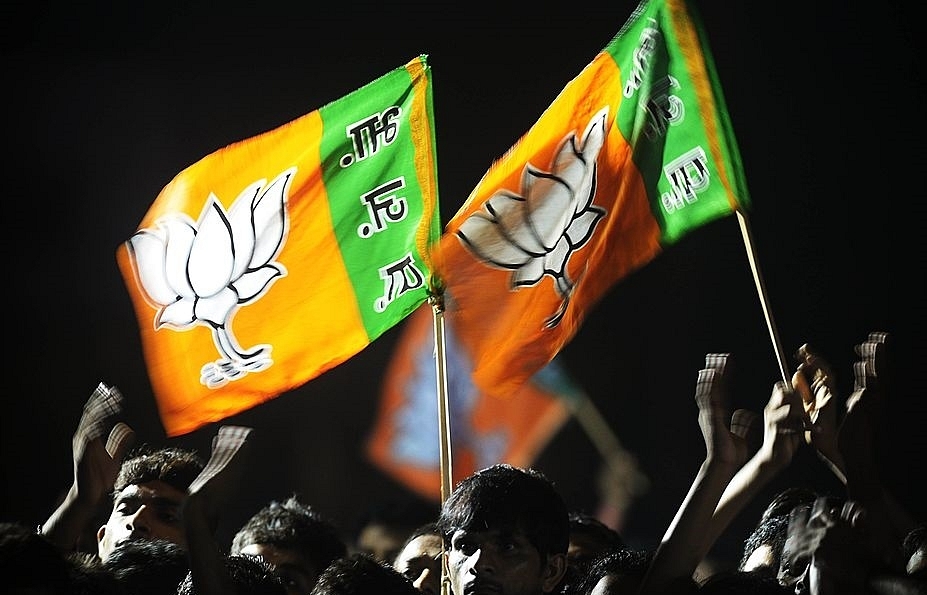Politics
The Demographic Threat Makes Bengal, Kerala And Assam BJP’s Growth Areas
- One thread that connects the BJP’s good showing in three states – Assam, Kerala and West Bengal – is the demographic threat to the majority community that is being increasingly felt with every census.
- The existential threat felt by the Assamese, in terms of ethnic, tribal and religious identities, is strong, as Muslims constitute nearly 35 percent of the population, thanks to higher birth rates and large-scale illegal immigration from Bangladesh.
- In Kerala, where the existential threat to the Hindu majority is greater than in Assam, the LDF became the default Hindu party by virtue of its ability to garner the bulk of the Ezhava vote.
- The Hindu vote, now split between three parties in West Bengal, is looking for a consolidating voice, and the BJP could well begin to provide that if it provides a credible leader and develops policies to stem the marginalisation of the Hindu vote.

DIBYANGSHU SARKAR/AFP/Getty Images
One thread that connects the BJP’s good showing in three states – Assam, Kerala and West Bengal – is the demographic threat to the majority community that is being increasingly felt with every census.
While the BJP alliance won hands down in Assam, in Kerala its vote share of 15 percent (along with ally BDJS) has made it a credible third force; in West Bengal, its 10 percent share has yielded a clutch of assembly seats. Chances are the BJP will have more seats in West Bengal than ever before.
The existential threat felt by the Assamese, in terms of ethnic, tribal and religious identities, is strong, as Muslims constitute nearly 35 percent of the population, thanks to higher birth rates and large-scale illegal immigration from Bangladesh. This threat, felt most acutely by the Assamese Hindu, is the main reason the Rashtriya Swayamsevak Sangh (RSS) has managed to grow deep roots in the state, supplanting the original Assamese movement against “outsiders”. The Congress’ failure to acknowledge and address this fear was one reason why it lost Himanta Biswa Sarma to the BJP, who helped Sarbnanda Sonowal (ex-AGP) craft a huge victory.
In the next major electoral bout, the Congress and the Muslim-dominated AIUDF are likely to join hands, making the identity issue for the Assamese Hindu even starker. The polarisation driven by demography can only sharpen in future.
In Kerala, where the existential threat to the Hindu majority is greater than in Assam, the LDF became the default Hindu party by virtue of its ability to garner the bulk of the Ezhava vote. The Ezhava vote is 25 percent of the total. The traditional UDF-LDF monopoly faces a new threat from the BJP-BDJS alliance, which is intended to gradually consolidate the Hindu vote the way the UDF has consolidated the minority vote. The Nairs and Ezhavas – the two main Hindu groups – lacked clout in both the UDF and the LDF, with the former giving primacy to minority vote banks, and the latter to class consolidation.
This could change in future elections, as the current Hindu population share of 54.7 percent could fall further (due to conversions going unreported in the census numbers) and the significantly higher birth rates among Muslims.
In West
Bengal, the BJP’s 10 percent vote share on a solo basis is evidence that the 27
percent bloc Muslim vote is leading to some degree of Hindu consolidation. All
the three “secular” parties, Mamata Banerjee’s Trinamool, the Left and the
Congress, are heavily reliant on the Muslim bloc vote, which has now become
aggressive and assertive. This was evident in the Kaliachak mayhem, where a
Muslim mob attacked a police station and got away with it.
In a quirk of fate, the Congress, which focused on many minority pockets, was leading in 47 seats to the Left’s 31 in West Bengal even though the Left had a popular vote closer to 27 percent compared to the Congress’ 12 percent. The Congress will thus be Mamata’s main opposition party - and both parties are heavily dependent on the minority vote consolidation.
The Hindu vote, now split between three parties in West Bengal, is looking for a consolidating voice, and the BJP could well begin to provide that if it provides a credible leader and develops policies to stem the marginalisation of the Hindu vote.
If it does
not muck up its strategy, the BJP is onto a long-term upward path in Assam, West
Bengal and Kerala, thanks to perceived demographic threats to the majority
community.
Support Swarajya's 50 Ground Reports Project & Sponsor A Story
Every general election Swarajya does a 50 ground reports project.
Aimed only at serious readers and those who appreciate the nuances of political undercurrents, the project provides a sense of India's electoral landscape. As you know, these reports are produced after considerable investment of travel, time and effort on the ground.
This time too we've kicked off the project in style and have covered over 30 constituencies already. If you're someone who appreciates such work and have enjoyed our coverage please consider sponsoring a ground report for just Rs 2999 to Rs 19,999 - it goes a long way in helping us produce more quality reportage.
You can also back this project by becoming a subscriber for as little as Rs 999 - so do click on this links and choose a plan that suits you and back us.
Click below to contribute.
Latest